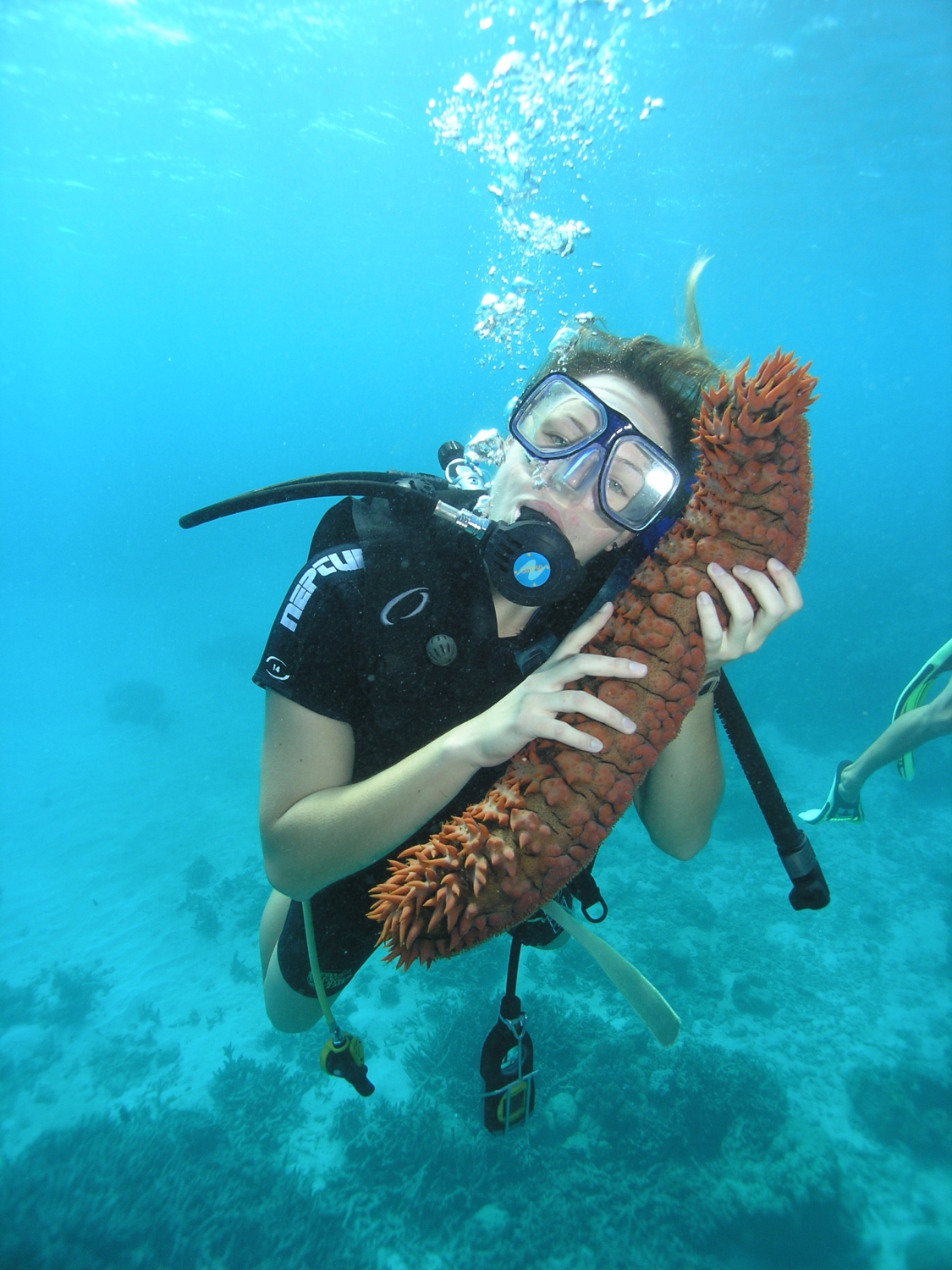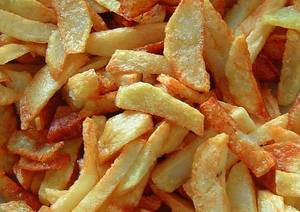Artificial Enzymes, Sea Cucumber Skins and Safer Chips
Interview with
Chris - Mark Peplow is the editor of Chemistry World. Mark hello, welcome to the programme.
Mark - Hello Chris.
Chris - So tell us about this first item.
Mark - Scientists in America have managed to design and build a working artificial enzyme from scratch. Now enzymes are nature's catalysts, they speed up chemical reactions in our bodies by tens of millions of times. We wouldn't work as living beings without enzymes. They're blobby proteins with a cavity in them perfect to fit chemicals that are involved in reactions. It brings them together in the perfect way to beat them up. You can hijack these to do useful chemistry. For example, an enzyme in yeast turns sugar into alcohol.
Chris - That is very handy!
Mark - But what about non-natural reactions? What happens if that reaction you want to catalyse doesn't exist in nature. Normally chemists use things like metals or metal compounds to do that but it would be much better to be able to persuade bacteria to do these reactions for us but to do that you need to make your own enzymes. Now Ling Jiang and colleagues at the University of Washington have done just that. They have made a computer model of a particular reaction called a retro-aldol and they designed an enzyme to fit around it. Then they actually made 72 similar versions of this enzyme in the lab. They found that 32 of them worked and the best one speeded it up by about ten thousand times. That's still a thousand times worse than what you see in nature but it proves that you can actually make these things from scratch. It's exactly the sort of thing that if Craig Venter gets his hands on it and puts it in one of his artificial life forms that he's promising to unveil next year: one of these artificial bacteria. This is exactly the sort of thing that you could put into that system.
Chris - It just goes to show that if you borrow from biology nature spent millions of years getting things right. If we apply the same concepts nature does and do it slightly differently you can actually come up with some pretty elegant solutions.
Mark - That's right.
Chris - In the same vein, sea cucumbers are providing a whole raft of solutions.
 Mark - This is a lovely little story that came out this week. Sea cucumbers are a relative of a star fish in that they graze on the ocean floor for carrion. When they're startled they can become rigid in seconds, basically because they can control the collagen fibres that are in heir skin. Now scientists at Case Western University in Cleveland, Ohio, have used this as inspiration to make their own material which does exactly the same thing. They made nano-fibres of cellulose, these are thousands of times thinner than a human hair and they embedded them within a sort of rubbery polymer substance. What they found that normally when dry the material's quite stiff. The nano-fibres are really glued to each other. As soon as you introduce water it separates the nano-fibres and the properties of the polymer start to dominate the composites so it's soft and flexible. Now, they think that these sorts of materials could be used, for example, in the micro-electrodes that are used in brain implants to help Parkinson's sufferers. Normally you'd assemble the components in dry conditions so they're always stiff, easy to work with but as soon as they get into the wet brains they become soft and flexible. That's one way that you could potentially reduce the scarring that you see in these sorts of implants.
Mark - This is a lovely little story that came out this week. Sea cucumbers are a relative of a star fish in that they graze on the ocean floor for carrion. When they're startled they can become rigid in seconds, basically because they can control the collagen fibres that are in heir skin. Now scientists at Case Western University in Cleveland, Ohio, have used this as inspiration to make their own material which does exactly the same thing. They made nano-fibres of cellulose, these are thousands of times thinner than a human hair and they embedded them within a sort of rubbery polymer substance. What they found that normally when dry the material's quite stiff. The nano-fibres are really glued to each other. As soon as you introduce water it separates the nano-fibres and the properties of the polymer start to dominate the composites so it's soft and flexible. Now, they think that these sorts of materials could be used, for example, in the micro-electrodes that are used in brain implants to help Parkinson's sufferers. Normally you'd assemble the components in dry conditions so they're always stiff, easy to work with but as soon as they get into the wet brains they become soft and flexible. That's one way that you could potentially reduce the scarring that you see in these sorts of implants.
Chris - Exactly how do they envisage this being done because they've actually had to go to these animals and get the fibres?
Mark - No, this is the thing. This is the inspiration that they're using exactly the same mechanism. They're making their own nano-fibres of cellulose. It's basically the same arrangement of thin threads packed into a rubbery, soft material. Depending on the conditions, the whole composite can behave like a rubber or like a stiff CD case, in fact.
Chris - Just brain implants or other things as well?
Mark - Well, this is the thing. Potentially, we spoke to a few scientists about this. A guy called Craig Hawker at the University of Santa Barbara in California was so excited about this, he was gushing about it. He was saying, why not think further? Why not do exactly what the sea cucumber uses this for? You could make a defensive suit which, under certain conditions, becomes impenetrable.
Chris - Sounds handy on the streets of Cambridge. Now what about this last one which is going to have people who are into their chips, that's French fries for our American friends; why should soaking them make them safer?
 Mark - Yeah. Back in 2002 people were quite surprised when a group of Swedish researchers said that a chemical called acrylamide, which is thought to be a cancer-causing agent, was found really widely in baked and fried food. This happens because when you heat food like that up there's a reaction that goes on among the amino acids in the food and the sugars in the food. The trouble is, this is part of the browning process that generates flavour.
Mark - Yeah. Back in 2002 people were quite surprised when a group of Swedish researchers said that a chemical called acrylamide, which is thought to be a cancer-causing agent, was found really widely in baked and fried food. This happens because when you heat food like that up there's a reaction that goes on among the amino acids in the food and the sugars in the food. The trouble is, this is part of the browning process that generates flavour.
Chris - But it makes it taste great!
Mark - It tastes great so the problem is how do you get rid of it? There's an enzyme that you can use to destroy the amino acid that's involved in this and indeed, some scientists based in Denmark have now proved that you can do this to cut out a huge amount of the acrylamide that you normally get in this. This is for the sort of manufacturers that make ready-made oven chips. Scientists in Britain have also shown, just last week, that simply soaking chips in water before you cook them can halve the acrylamide levels. There is a drawback though. We talked to the UK's leading expert on acrylamides, Bronek Wedzicha at the of the University of Leeds, he said, "you know, this is great but the trouble is it's going to give you pale chips that lack flavour." The flavour is so intrinsically tied to the reaction that makes this chemical acrylamide.
Chris - I'm sure they can find something suitably carcinogenic to flavour them with afterwards.
Mark - I'm sure.










Comments
Add a comment